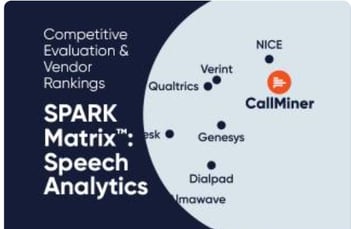Conversational analytics is the name of the game today in the call recording world. According to leading conversational analytics provider, CallMiner, "Conversational analytics delivers clear insight into the mindset of the customer by monitoring and analyzing their behavior and emotion during every interaction. By categorizing, tagging, and scoring 100% of customer interactions, customer conversation analytics reveals the opinions, desires, and needs driving customer choices and gives companies a deeper understanding of what is required to create exceptional customer experiences."
More and more businesses, large and small, are deploying call center analytics these days, and you want to be sure your current or future call recorder primes you for (rather than prevents you from) effectively implementing conversational analytics.
Here are four key features your call recorder must have to easily transition you to conversational/speech analytics:
1. Dual channel, high fidelity stereo audio capture is imperative as it enables the recorder to isolate each party on the call onto a distinct line so overtalk is not an issue. Sound quality is also high fidelity, leading to much more accurate transcription and analytics results.
2. Simultaneous audio recordings for both post-call analytics and real-time streaming. You may opt for post-call analytics today and then want real-time analytics tomorrow. Your call recorder must accommodate recording delivery for both use cases. Most recorders do not.
3. Audio file segmentation to easily identify calls that involve transfers from one agent to another. Many cloud business VoIP recorders offer transferred calls as one long single audio file, which can disrupt call segment distinction for quality assurance and compliance purposes. Other advanced call recording features enable the linking of the disparate segments to a single full interaction through a unique "interaction ID" to keep the complete call together.
4. REST API for open, easy audio data sharing with transcription and analytics engines. This enables real-time analytics. Many recorders require lengthy and complicated integration with outside engines to receive the recording, transcribe it, and then process analytics findings.
Are you ready for analytics? Does your call recorder have these critical functions to prime your business to deploy analytics successfully and efficiently? If not, now is the time to consider changing recording vendors.

